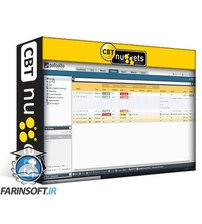جمع جزء: 189,000 تومان
- × 1 عدد: Inspirational Leadership Skills - 189,000 تومان
This intermediate Palo Alto PCNSA training prepares learners to take the PCNSA exam, which is the one required exam to earn the Palo Alto Networks Certified Network Security Administrator (PCNSA) certification.
The Palo Alto Networks Certified Network Security Administrator certification isn’t designed just for security professionals — customers, value-add resellers, pre-sale systems engineers, system integrators, and system administrators can get a lot from it too. The PCNSA focuses on installing, maintaining and managing Palo Alto Networks next-generation firewalls to protect networks — so no matter your role or responsibilities, with our PCNSA training, you’ll understand how to use Palo Alto’s cutting edge tools to protect networks from emerging cyber threats. If you need insight into navigating firewalls on Palo Alto’s security operating system, an extensive background in digital security isn’t a prerequisite for our PCNSA training, and afterwards you’ll be a more capable user of any network secured by Palo Alto.
در این روش نیاز به افزودن محصول به سبد خرید و تکمیل اطلاعات نیست و شما پس از وارد کردن ایمیل خود و طی کردن مراحل پرداخت لینک های دریافت محصولات را در ایمیل خود دریافت خواهید کرد.


Fortinet NSE 6 – FortiADC Online Training

CompTIA Network+ (N10-008) Certification Training

یادگیری کامل Fortinet NSE 4
--Configure-and-Verify-First-Hop-Redundancy-Protocols-(FHRP)-main-resized.jpg)
آموزش کامل 350-401 ENCOR : پیکربندی و تست کارکرد پروتکل First Hop Redundancy Protocols (FHRP)
-main-resized.jpg)
آموزش مدرک بین المللی Cisco CCNP Enterprise Core (350-401 ENCOR)
--OSPF-Foundation-Concepts-main-resized.jpg)
آموزش کامل 350-401 ENCOR : یادگیری مفاهیم OSPF

بازرسی محتوا در فایروال های FortiGate

*2023*CompTIA A+ Simulations for Core 1 and 2 220-1101/1102

دوره یادگیری Getting Started with Palo Alto Firewalls v8.x

SD-WAN Architecture: How to Deploy Cisco SD-WAN Controllers Online Training
✨ تا ۷۰% تخفیف با شارژ کیف پول 🎁
مشاهده پلن ها